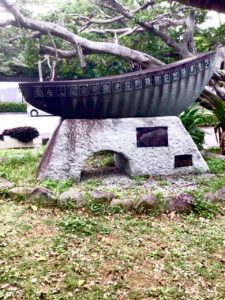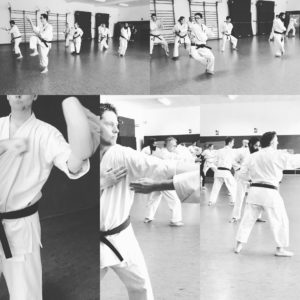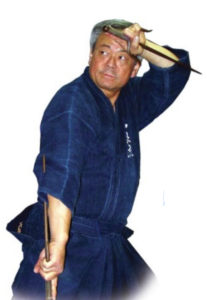Okinawan Karate and Kobudo –
Practical research of the old Kata and their principles
Shorin Ryu Karate and Yamanni-Ryu Kobudo in Hamburg
– copyright Oliver Hofmann –
Address:
HTBU e.V.
Klinikweg 10
22081 Hamburg
Germany
Training Schedule:
Please check our training schedule
First trainings are free of charge. Thereafter 21€ per month with access to the complete sports programm (f.e. Iaido) of the HTBU e.V.
Beginners welcome anytime!
Contact: ollihofmannhh@googlemail.com
Shorin Ryu Karate and/ or Kobudo near Munich:
I am often in southern Germany, Bavaria near Landshut or Munich Airport area. Training happens here for free and in natural environment.
If you are interested to join, please send an email to: ollihofmannhh@googlemail.com
Kara-Te is a fighting and moving art which originated in Okinawa. “Oki” has the meaning of Ocean and “Nawa” can be translated as “chain” or “line”. A line or a chain is long and thin and like this shape the islands around Okinawa are located. All Islands together look like a long chain of pearls between Japan and China in the pacific ocean. In old times the islands were called Ryu Kyu or Loo Choo.

Old time Okinawa had good connections, cultural exchange and trade with several other Asian cultures like China and later in also with Japan. In 1879 the kingdom changed and became a Japanese prefecture. Given the location of Okinawa it became a melting pot for various Asian cultural traditions. In China the so called external martial art styles Kung Fu or Wushu but also internal and very soft styles like Tai Chi or Wu Dang Kempo were created. Some Chinese families moved to Okinawa to settle down. Stories about the settling down of the “36 Chinese families” or shipwrecking Chinese people in the 15th century are being told. Beginning in the 14th century, Sapposhi (Chinese envoys) were regularly invited to Okinawa by the kings. The Chinese brought their cultural and martial arts knowledge to Okinawa. 36 chinese families settled down in Kume(mura) area and brought martial arts with them. A monument built to honor these families is still present in that area close to a chinese garden. It can be assumed that some Chinese named kata like Wanshu or Kushanku trace back to these persons.
The trading ships/ envoys between RyuKyu Kingdom (Okinawa) and China were called sappushi and needed martially skilled people on board for security reasons. Pirates called “Waka” were a always present threat. Okinawa sent own people to China to study culture and martial arts techniques. Kara-Te developed in the three Okinawan close by located regions of Shuri, Naha and Tomari.

Our martial art is based on the development by masters living in Shuri and Tomari and is called Shorin-Ryu. The other style of Kara-Te which developed from a probably more intense chinese influence is called Shorei-Ryu, created by masters living in Naha. Shorin-Ryu (also called Shuri-Te and Tomari-Te) and Shorei-Ryu (also called Naha-Te) can be seen as the two main lines of the weaponless martial arts of Okinawa. Shorin-Ryu put into consideration that the opponent can be armed with bladed weapons and uses swift body dynamics and hiding or covering of vital points.
Shorei-Ryu puts much effort in hardening the body which can be used against a weaponless opponent. Most of the thousands of newer Kara-Te styles have their roots in these two styles.
The early Shorin-Ryu masters added some martial arts knowledge from Chinese martial arts to the already practiced art of fighting called “Te” or “Di”. Te or Di has the meaning of “hand” and is an integral part of Okinawan culture. Kara-Te was named To-Di, the meaning of “To” is pointing to Chinas Tang dynasty (618 – 907). The masters also integrated technical principles of sword fighting into the art and formed a perfect synthesis of Kara-Te and Kobudo. Matsumura Sokon (born around 1796) is one of the masters who created the Shuri-Te style. Matsumura was a disciple of the so called “To-Di” Sakugawa Kanga. Sakugawa was born around 1735, he is the originator of the Yamanni-Ryu Bo style. Adding “To-Di” to his name shows the high recognition to his mastery in martial arts. Matsumura was the bodyguard for three Okinawan kings and well versed in the Jigen-Ryu sword style of the Shimazu samurai which were based in Satsuma. He was able to travel to mainland Japan and China to intensify his studies. Another teacher of Matsumura was a Chinese martial artist to whoms name the kata Kushanku traces back to. In this kata we find the root of the Shuri-Te and Shorin-Ryu.
Kara-Te uses a straight line as basic principle which is contrary to the Chinese principle of making circles and rotations. The straight line principle is based on the Japanese sword, when executing a cut the hands can move in a direct line towards the target while the cutting part of the blade gets a high amount of energy. The advantage of the straight line and avoiding circles makes techniques of Kara-Te highly effective, fast and not easy recognizeable to the opponent. Another advantage of not rotating is that it becomes easier to protect the own vital line (Seichusen) from the opponents attacks or weapons. A very profoundly developed internal body dynamic is necessary to perform these techniques in an effective way. Back in these times Kara-Te was known as “To-Di”.
 If one watches the traditional Okinawan folk-dances carefully one can see a relationship to the martial art called „Di“. The Okinawans probably followed a very smart strategy as they mixed martial arts with traditional dancing. It prepared also kids at an young age and woman for learning martial art principles. An okinawan proverb tells us that we have to be able to defend ourself if we live in this world.
If one watches the traditional Okinawan folk-dances carefully one can see a relationship to the martial art called „Di“. The Okinawans probably followed a very smart strategy as they mixed martial arts with traditional dancing. It prepared also kids at an young age and woman for learning martial art principles. An okinawan proverb tells us that we have to be able to defend ourself if we live in this world.
In most historic Kara-Te books we can read about two weapon bans happening around 1480 during king Sho Hashis periode after he united the three kingdoms and in 1609 after the invasion of the Japanese Samurai from Satsuma. Many people believe that the latter weapons ban made the Okinawans develop Kara-Te as empty handed martial art in order to defend themselves unarmed against well armed Samurai. It is common sense that it is not possible for the hard working farmers to learn a martial art to such a high degree that it makes them able to fight against Samurai. Back in the 14th century the islands were separated into the three kingdoms of Hokuzan, Chuzan and Nanzam. King Sho Hashi united these three kingdoms and a more peaceful era of the Ryu Kyus began. Around 1430 he chose Shuri and its Castle as the capitol for reigning and governing. Before that time Ryu Kyu suffered of many civil conflicts and quarreling kings.

In order to avoid such conflicts, Sho Hashi probably instituted laws to forbid certain weapons to be owned by anyone but the ruling and law enforcement class. As we know the weapon principles are well integrated into the Kara-Te movements. Probably the connection of the weapon bans or edicts did not influence the development of Kara-Te as much as assumed. Another fact is that Kara-Te was developed by masters who worked closely for the king himself and were able to train with swords. A king or government needs an army carrying weapons for law enforcement and protection of the people.
Around 1900 one of Matsumuras students, Itosu Anko, made big and finally successful efforts to bring the behind closed doors and blinded windows trained Kara-Te to the public. He wrote letters to the government in order to promote the health and strength aspects of Kara-Te training. With his disciple Funakoshi Gichin (a school teacher) he introduced Kara-Te into Okinawan school sports system. For that reason he had to change Kara-Te from a fighting art full of dangerous techniques into a adequate gymnastic for kids. He created a new kata series called the “Pinan Kata”, taking sequences out of the original kata like Kushanku, Passai and Naifanchi. This means that the public saw an already changed Kara-Te, which focused more on physical exercise than on martial art aspects. The core principles of seichusen and how to move accordingly along the enbusen of the kata. Herewith the enemy was removed out of the kata and changed it into something else. Itosu teached Kara-Te separated from Kobudo which means he cut one side of the cohesive martial arts away. Before Kara-Te and Kobudo used to be one thing, training one part also enhances the skills in the other. They were not meant to be separated.
Later a Japanese navy doctor recognized the very good physical condition of Kara-Te students which made the mainland Japanese government interested into the Okinawan martial art.
Around 1930 a student of Itoso Anko (1832 – 1916) and Matsumura, named Funakoshi Gichin (1868 – 1957), changed the Kanji for To-Di (China-Hand) into the modern meaning of “Empty-Hand” – Kara-Te. This made people think that Kara-Te and weapons training are two different things. Funakoshi himself offered a different intention of his change to “Empty-Hand” explaining that he wanted to point out the philosophical aspect of Kara-Te which is making once mind empty (Mushin and Zanshin) – not the hands. Funakoshi himself trained Bo and Sai as we can see in old pictures. Funakoshi wanted to make Kara-Te popular in Japan. With the meaning of “China-Hand” his chances were not standing good since Japan and China had a bad relationship. So his change in the meaning of the kanji made also strategically sense although it was going against the opinion of many masters in Okinawa.

Funakoshi Gichin was invited twice around 1920 to mainland japan in order to demonstrate the Okinawan martial art. There would have been probably better skilled masters for such reason like Motobu Chokki but Funakoshi was high skilled in teaching strategies and philosophical knowledge. During his first visit he performed being watched by a well trained martial art audience. He showed a Kara-Te which was probably influenced by Itosu Ankos new principles and used gyaku tsui a lot to counter partner attacks. By doing so he was unable to convince the audience that Kara-Te is a well developed martial art. Next time Funakoshi came for another demonstration to mainland Japan he did chose a different audience. This time the audience consisted of people without profound martial arts knowledge like school teachers and other well educated persons. This time he was more successful and stayed in Japan to begin the spreading of Kara-Te. Funakoshi is called the “father of modern Kara-Te”. Maybe this accreditation would have better fit to Itosu Anko as he is the one who started the changes. Without the efforts of Funakoshi and Itoso, Kara-Te would have been maybe never spread through all countries. That means, looking from that perspective they did a great job. But they changed Kara-Te more and more to adopt it to the new teaching situation. In old times the sensei did chose his few students very carefully, now the students did chose their sensei or became taught during school sport lessons. They needed many instructors and did not have much time to teach them.
Principles and dynamics had to be simplified even more. The name of the most popular Kara-Te style “Shoto-Kan” goes back to Gichins pseudonym “Shoto” (sound of pinetrees in the wind) and “Kan” meaning school. This school opened around 1935. Funakoshi Gigo learned Kara-Te from his father Gichin but favored lower stances and strong muscle contraction at the end of the techniques. Gigo was one of the best skilled students of Gichin and became the young instructor and was called “Waka-Sensei”. Unfortunetaly Gigo died early in 1945. But he changed the dynamics and stances of his fathers Kara-Te and created what we know today as Shotokan Kara-Te.

Nakayama Masatoshi changed Kara-Te around 1955 to make it become tournament compatible and founded the Japan Kara-Te Association JKA. The JKA sent intrsuctors all over the world to promote Kara-Te. The Kara-Te that was spread successfully around the world a couple of years after the second world war was over. A new direction was born which changed the already simplified martial art into a martial sport. Now Kara-Te was judged by referees, it needed to become showy and during kumite competition the techniques have to be clearly visible to the referee. This is contrary to the old idea of hiding the own movements from the opponents eyes.
Other masters like Kenwa Mabuni, Chokki Motobu and others follwed Funakoshi Gichin to mainland Japan to introduce their way of Kara-Te. In this way also other styles like Matsubayashi-Ryu, Wado-Ryu, Shito-Ryu, Goju-Ryu or Uechi-Ryu became known and practiced around the world but not to the extend of the Shotokan-Kara-Te which changed so much from it’s roots.
Today we have many Kara-Te styles, most of them changed more or less by the mentioned influences. A lot of Kara-Te practitioners practice a competitive influenced style without knowing it and without participating in tournaments. Many practitioners don’t know much about the roots or background behind the movements or kata they perform. So it’s rather a

physical exercise now than a martial arts way of training. But more and more Karat-Te-Ka become aware of the high amount of missing knowledge of the modern styles and start to research. Funakoshi Gichin wrote “to study the old means to understand the new.”
We are very lucky to have found Shihan Toshihiro Oshiro who dedicated his life into the research of the old way of the Okinawan martial arts and lets us participate and learn. The old moving basics and principles make this old art fascinating, beautyfull and effective. He showed us why Kara-Te and Kobudo were never meant to be separated. By implementing training, study and teaching of this way into our life we can strenghten and developed ourselfs and others all life long and understand that martial art much better.